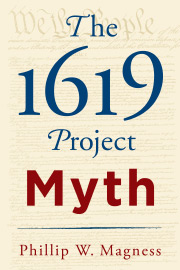The reparations movement has gained tremendous ground in recent years by offering promises of compensation to the descendants of slavery’s victims in the United States. The proposal forms the centerpiece of the New York Times 1619 Project, which is now a multi-million-dollar docuseries on the Hulu streaming service. A reparations task force in San Francisco recently recommended $5 million payments to African-American residents, and several Democratic members of Congress have pressed the Biden administration to prioritize the same cause at the federal level. Reparations have even made their way into children’s programming, with a recent episode of the Disney cartoon “The Proud Family” depicting them, angrily and self-righteously, as society’s obligation to African-Americans.
The rhetoric around these proposals often adopts a moralizing tone about restitution for past injustices, many of which are all too real. As a matter of economics, though, reparations advocates offer surprisingly little in the way of viable solutions. If the US government tried to implement the reparations program that the 1619 Project espouses, we would get huge increases in both taxes and inflation. Yet the key economist advising on this proposal denies that any taxes would have to increase.
In the climactic conclusion to the Hulu series, 1619 Project creator Nikole Hannah-Jones explains that “reparations is not just about slavery, but about decades of government-backed legal apartheid deployed against the descendants of the enslaved.” As we pointed out in “The 1619 Project Vindicates Capitalism,” in the Wall Street Journal on February 22, 2023, “almost every example presented is the result of government policies that, in purpose or effect, discriminated against African-Americans.” The particular interventions we highlighted were eminent domain, racial redlining of mortgages, and enforcement of union monopolies that excluded black people.
But the only remedy for the mislabeled track record of government-inflicted injustice, viewers are told, is a massive government redistribution program with a price tag of $13 trillion. Let’s put this in perspective in two ways. First, $13 trillion is over half of current US GDP. Second, it amounts to $312,000 per black man, woman, and child. If you gasp at San Francisco’s $5 million and think $312,000 is no big deal, realize that $310,000 in reparations per person, multiplied by about 41.6 million African-Americans, is quite a big deal.
Ms. Hannah-Jones interviews Duke University economist William A. Darity, one of the most prominent academic voices behind the $13 trillion number. Darity has advanced similar dollar amounts in his scholarly work, including a 2022 article in the Journal of Economic Perspectives. As with the Hulu episode, he offers this figure while eliding difficult questions about financing this redistributive payout.
Vaguely sensing that there’s no such thing as a free lunch, Hannah-Jones asks where the federal government would get the money to pay such a massive amount. Wouldn’t taxes have to be raised, she queries. Mr. Darity confidently asserts that no such action is necessary.
“It’s a matter of the federal government financing it in the same way that it financed...the stimulus package for the Great Recession” and the COVID-era CARES Act, Darity continues. To do so, the federal government need only “spend the money but without raising taxes.”
This verges on tooth-fairy economics.
The cold reality of public finance means that every government outlay must be paid eventually, whether through taxes in the present, higher inflation, which is also a tax, or higher taxes on future generations. The federal government has no good option when it comes to just “spending the money.”
If the Federal Reserve monetized the whole amount, base money, which is currency in circulation plus bank reserves, would increase by $13 trillion. M2, the conventional measure of the money supply, is 3.96 times the monetary base. If that relationship held, then increasing the monetary base by $13 trillion would increase M2 by 3.96 times $13 trillion, which is $51 trillion. M2 is currently $21 trillion. $51 trillion is a whopping 245 percent increase. So if the spending occurred all in one year, inflation would be about 240 percent. Critical Race Theory would unite with Modern Monetary Theory in an inflationary spiral.
What if the Fed didn’t buy any of the new debt? Then future taxpayers would be on the hook. In a given year, the federal government raises about $4.8 trillion in revenues. So paying off just the new $13 trillion debt would require almost three years of federal revenue.
The only other alternative to increasing current taxes, creating massive inflation, or increasing future taxes would be to enact massive cuts in other programs. Remember earlier this month when, in his State of the Union address, President Biden accused congressional Republicans of wanting to sunset Social Security and Medicare? If the $13 trillion reparations were paid, sunsetting those programs, or reining them in by a double-digit percent, would almost certainly be on the table.
Almost everyone who designed the government’s discriminatory programs is long gone from office; most are dead, as are all plantation owners who perpetrated the original atrocities of slavery. So the vast majority of people who would shoulder the financial burden of reparations are people who had nothing to do with either slavery or the century of discriminatory policies that followed.
How about instead going through the various federal programs, and state and local programs, for that matter, that intervene in markets or violate property rights, often in discriminatory ways, and ending them? It would be great if Nikole Hannah-Jones and William Darity signed on to this 2023 project.











